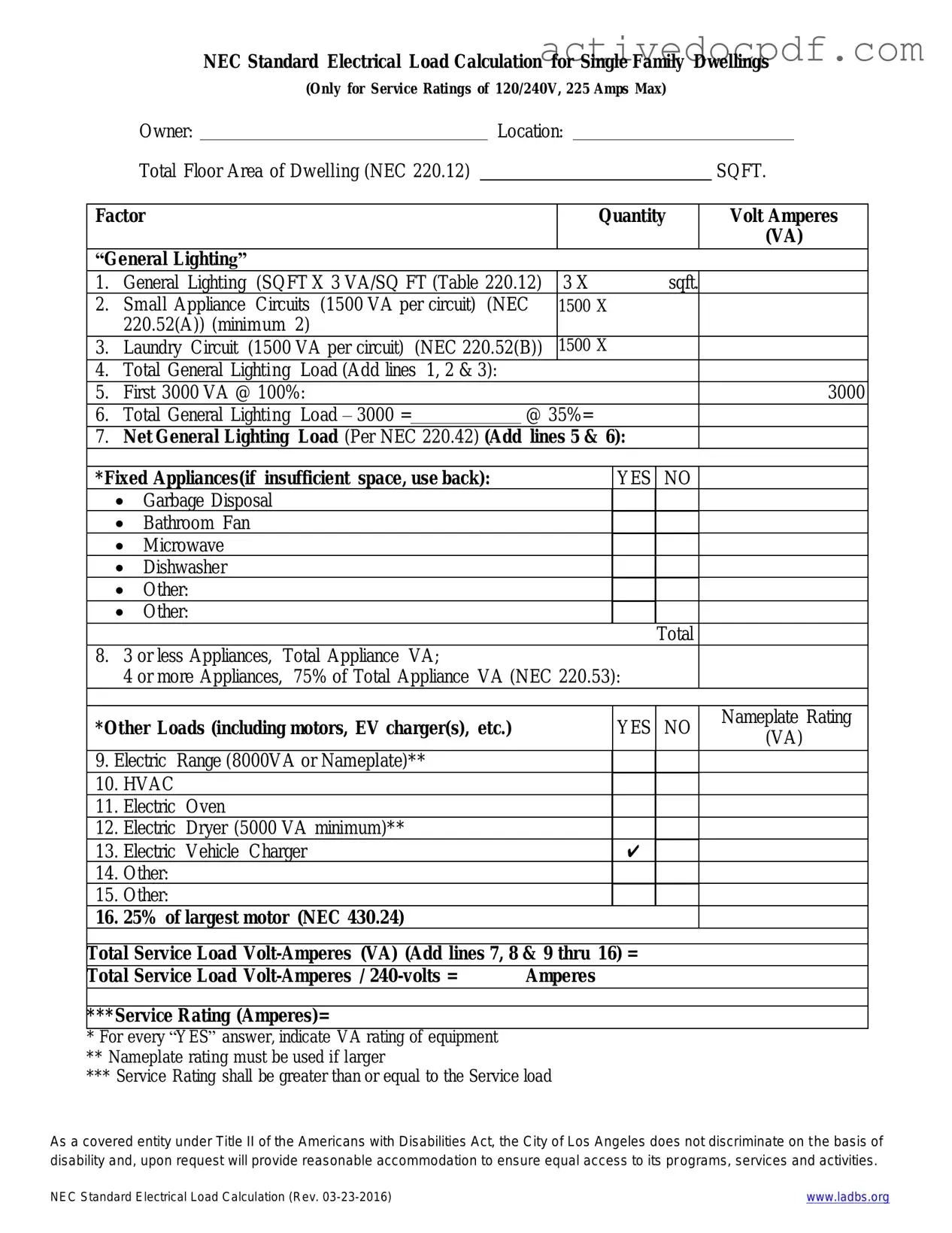The LADBS NEC Standard Electrical Load Calculation form is a document used to determine the electrical load requirements for residential and commercial buildings. This form ensures that the electrical system can safely handle the anticipated load, complying with the National Electrical Code (NEC) and local regulations.
This form must be completed by anyone planning to install or modify electrical systems in buildings. This includes homeowners, contractors, and electricians. It is essential for ensuring that the electrical service is adequate for the intended use of the building.
To complete the form, you will need to provide various details, including:
-
The type of occupancy (residential, commercial, etc.)
-
The total square footage of the space
-
The number of circuits and their respective loads
-
Appliance and equipment ratings
-
Any additional loads, such as HVAC systems or electric vehicle chargers
How is the electrical load calculated?
The electrical load is calculated by summing the individual loads of all devices and appliances in the building. The form provides specific guidelines on how to assess each load based on the NEC. Factors such as demand factors and diversity can also affect the overall calculation, allowing for a more accurate assessment.
The LADBS NEC Standard Electrical Load Calculation form is available on the Los Angeles Department of Building and Safety (LADBS) website. It can be downloaded directly from their forms section. Additionally, physical copies may be available at LADBS offices.
While there is no fee specifically for submitting the LADBS NEC Standard Electrical Load Calculation form, there may be fees associated with the overall permit application process. It is advisable to check with LADBS for the most current fee schedule.
Once the form is submitted, LADBS will review the electrical load calculations. If everything meets the necessary codes and standards, the department will approve the electrical plans. If there are any discrepancies or additional information needed, they will contact you for clarification.
Yes, modifications can be made to the form after submission. However, it is crucial to inform LADBS of any changes. This ensures that the review process remains accurate and up-to-date with the current plans for the electrical system.
If you have questions regarding the LADBS NEC Standard Electrical Load Calculation form, you can contact the LADBS directly. They provide resources such as phone support, email assistance, and in-person consultations to help clarify any uncertainties.
